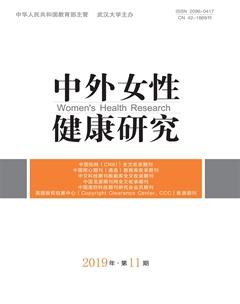JCI標準下院內急救體系運行及對急救時效性的影響
顏莉


【摘要】 目的:探討JCI標準下院內一體化快速急救體系新模式對嚴重創傷患者急救時效性的影響。方法:將JCI標準下院內一體化快速急救體系新模式啟動前后的相同時間段內(12個月)嚴重創傷急救患者分為對照組(88例)和觀察組(112例)。對照組實施院內傳統急診救治、轉運和交接,觀察組實施院前呼叫預警,院內多學科多部門系統協同急救小組緊急干預、搶救和轉運的一體化快速急救模式。回顧性分析對比兩組患者院內急救時效性。結果:觀察組患者院內急救過程中各階段的平均救治時間均明顯較對照組縮短(P<0.05);觀察組救治成功率明顯高于對照組,觀察組院內轉運交接不良事件發生率、并發癥發生率和死亡率明顯低于對照組,差異有統計學意義(P<0.05)。結論:JCI標準下院內一體化快速急救體系新模式可顯著提高嚴重創傷患者急救工作時效性,提高搶救成功率,降低創傷并發癥發生率和死亡率,保證了患者醫療安全。
【關鍵詞】 JCI標準;院內急救;一體化;多學科;嚴重創傷;成功率
[Abstract] Objective:To explore the effect of the new model of integrated rapid first aid system in the lower court of JCI standard on the timeliness of emergency treatment for patients with severe trauma.Methods:The patients with severe trauma in the same time period (12 months) before and after the start of the new model of the integrated rapid emergency system in the JCI standard were divided into the control group (88 cases) and the observation group (112 cases). The control group implemented traditional emergency treatment, transshipment and handover in the hospital, the observation group implemented pre-hospital call warning, and the integrated rapid emergency mode of emergency intervention, rescue and transshipment of the multidisciplinary multi-sector system synergy emergency team in the hospital. Retrospective analysis compared the timeliness of in-hospital first aid in both groups.Results:The average treatment time of the patients in the observation group was significantly shorter than that of the control group (P<0.05). The success rate of the observation group was significantly higher than that of the control group. The incidence of adverse events and the incidence of complications in the observation group. The mortality rate was significantly lower than that of the control group, and the difference was statistically significant (P<0.05).Conclusion:The new model of integrated rapid emergency system in the lower court of JCI standard can significantly improve the timeliness of emergency work for severely injured patients, improve the success rate of rescue, reduce the incidence of trauma complications and mortality, and ensure the medical safety of patients.
[Key words]JCI standard; Hospital first aid; Integration; Multidisciplinary; Severe trauma; Success rate
嚴重創傷患者急救效果和生命安全的救治意義取決于急診救治的時效性。我國傳統的急診救治受限于院前呼叫預警信息系統配置不完善,院內急救人力資源配備不足,調配機制不合理等情況,嚴重影響嚴重創傷患者急救時效性[1]。自2011 年1月1日起,國際聯合委員會(JCI)要求通過國際醫院標準的醫院實施國際患者安全目標(IPSG)。國際患者安全目標的目的是促進病人安全的具體改進。這些目標關注醫療照護中容易出問題的領域,并提出以循證或專家共識為基礎的解決方案,充分認識到設計完善的系統是保障提供安全、高質量醫療照護的關鍵[2-3]。2018年1月,本院參照JCI標準,改造院內急救流程,啟動院內一體化快速急救體系,包括成立院前院內緊急呼叫HIS系統平臺、院內多

